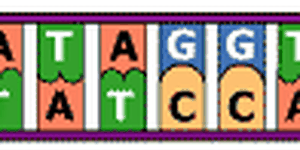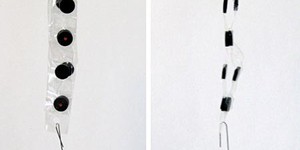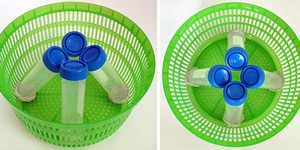Fifth Grade, Biotechnology Science Projects (9 results)
Yogurt, biofuel, biodegradable plastics, and antibiotics are all examples of products based on biotechnology research and manufacturing techniques. What else will we be able to create as we use biotechnology in new ways?
|
Select a resource
Coding Projects
Sort by
|
Sometimes science can be really messy or use pretty disgusting ingredients. That is what it takes to understand how the world works, even if the experiment isn't pretty. Do you like chemical reactions that stink and ooze foamy bubbles? Do you think it sounds fun to make a super gross liver smoothie? Then this is the experiment for you!
Read more
In this project, you'll learn how to isolate DNA from onion cells, separating it from other cellular components in a manner that still preserves its structure and sequence. In the end, you'll have enough DNA to see with the unaided eye, and you'll be able to spool it to demonstrate its strand-like structure.
Read more
New
Have you ever walked next to your favorite ocean, lake, or creek and seen plastic waste everywhere? Have you ever thought about how much plastic breaks down into microplastics and pollutes waterways? Scientists are coming up with new ways to remove these microplastics from our waterways, and now you can test them out for yourself at home.
Read more
Do you know why enzymes are oftentimes called the workhorses of biochemistry? It's because they can speed up a wide variety of chemical reactions, and chemists and biologists use enzymes to do all kinds of jobs. In this project, pectinase, an enzyme frequently used in the food industry, will be used to extract juice from apples.
Read more
Microfluidic devices are small tools used in different fields like engineering and biomedicine. Scientists and engineers use these devices to work with very tiny amounts of fluids for various experiments. These experiments can include things like biomedical research, creating new medicines, and even applications in the car industry. In this project, you will create and test your own microfluidic device design and compare it to other designs.
Read more
Ever used a pair of molecular scissors? Restriction enzymes are molecular scissors that cut DNA into pieces. Find out which enzymes will cut, and where by making a restriction map. Then you can figure out what will happen if you change the sequence of the DNA. Will the same enzymes still cut the new DNA sequence?
Read more
New
Can AI understand human language? In the future, AI could aid in emergency interpretive service in the hospital when translators aren't available. But can current AI algorithms understand non-verbal languages like sign language? In this science project, you will test whether AI can learn sign language gestures or phrases to see if it can be used for interpretation.
Read more
Do you like solving mysteries? In this experiment, you can find out how a DNA fingerprint can help you figure out whodunit. The answer might just be in the "sequence" of events!
Read more
How do scientists "copy" DNA? They use a process called the Polymerase Chain Reaction, or PCR. The key to making this process work is having a short piece of DNA, called a primer, that will stick to the larger piece of DNA you want to copy, called a template. In this science project, you will test how the number of matches and mismatches in a primer will affect its ability to stick, or anneal, to the DNA template during PCR.
Read more
Imagine that you could make an important piece of laboratory equipment in your kitchen. With this science project idea, you can! You will create your own centrifuge out of a salad spinner and some putty. In science labs, centrifuges are used to separate different liquids and/or solids from each other. You can load your homemade centrifuge with samples and see how they separate. What
do you think happens to melted butter in a centrifuge?
Read more
Have you ever looked in the kitchen cupboard and found a container of tiny white grains, but you were not sure if they were sugar or salt? They look very similar. How could you tell them apart? Well, you know that sugar and salt taste very different. Taste is actually called a property, and properties are used to describe and identify different materials. Properties can also be used to physically separate things. In this science project, you will use different properties to create a way to…
Read more
|
















